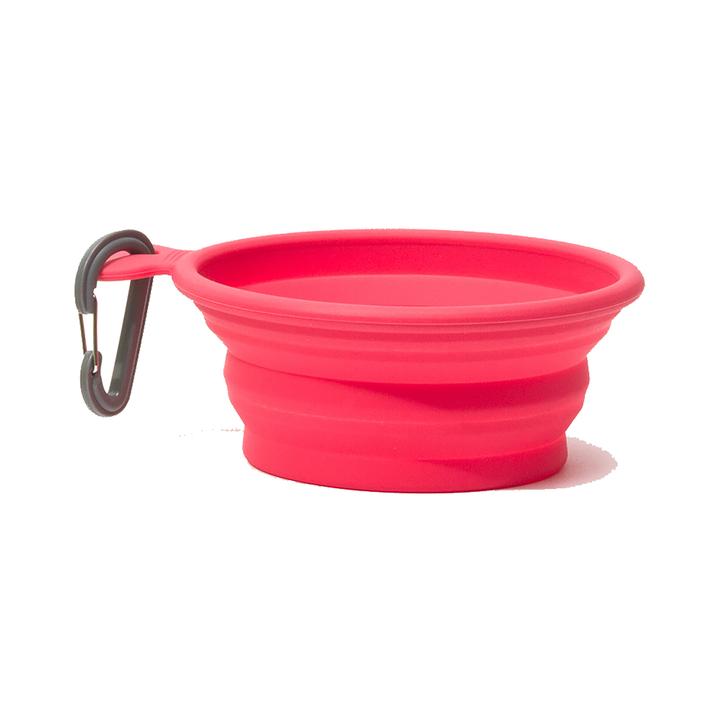How to Keep Your Dog Warm During Winter
'Tis the season of curling up next to the fire, cuddling under blankets and enjoying some cozy relaxation. And more importantly, 'tis the season for snow-filled trails, icy explorations and winter adventures!
Missoula dog owners know that the winter is all about having as much fun as possible outside while keeping your favorite winter adventure buddy safe and warm. And as Missoula isn't afraid of dipping into the single digits or even the negatives, keeping your dog safe from the elements can be challenging.
Here are our best tips and tricks for keeping your dog happy, healthy and protected as you bound into some snow-covered adventure!
Tips for Keeping Your Dog Warm During Winter
How long should dogs be outside in the winter?
The short answer? It depends on the breed. Malamutes and Huskies may want to nap under a blanket of snow (and can do so safely!) Chihuahuas and Whippets may need several layers of winter clothes for a quick potty walk. Understanding the limits of your dog breed is the first step to gauging how much time they can spend in winter temperatures.
When temperatures dip below freezing, limit your dog's outdoor activity to 10 to 15 minutes. While dogs with longer hair can tolerate colder temps better, no breed of dog should be left outside for extended amounts of time in below-freezing temps or extreme weather.
Essential dog body parts to keep warm
Like humans, keeping your dog's core warm is important - that is where all the important stuff lives, after all! Paws are another vital body part to protect from the elements.
Signs to look for with dogs struggling in the cold
Dogs can't talk, but they can tell you when they've had enough snow for the day. Like humans, dogs are susceptible to frostbite and hypothermia, which can cause lasting damage if not treated quickly.
So when you're outside with your dog, keep a close eye out for these signs:
- Shivering
- Lethargy
- Disorientation
- Whining
- Lack of energy/change in movements
When your dog starts showing any of these symptoms, it's time to get them somewhere warm.
What to do if your dog shows signs of hypothermia or frostbite
Quick and proven solutions to combat the cold are your best way to minimize any lasting damage. Contact your vet immediately if you are concerned about your dog's safety or if your dog is showing moderate to extreme signs of hypothermia or frostbite.
If you have a shivery pup that needs some quick relief, there are steps you can take at home.
At-home strategies for warming up a chilly dog:
- Most important is getting your dog out of the cold and into a warm building, house or vehicle.
- Wrap them in blankets, towels, coats - anything that provides insulation.
- Place warm water bottles near your dog, making sure to have layers of blankets between the bottles and your dog's skin.
- Use a warm water compress or soak impacted areas in gently heated water.
- Never use direct dry heat (hair dryer, heater) to warm up your dog.
Proper winter nutrition
A great day in the snow starts in your dog's food bowl! Proper nutrition for dogs will give them the energy they need to perform at maximum levels while jumping through snow piles and sprinting down winter trails.
Are you interested in learning more about our favorite dog foods? Check out this blog post that covers our favorite dog food brands that are great for your pet and the planet.
Water in the winter
Proper hydration is just as important in the winter chill as in the summer heat! You want your dog's body performing at top levels while they take on the winter weather, so make sure your pup has ample water before, during and after a chilly winter afternoon outside.
Helpful Tools To Keep Your Dog Protected from the Snow
Safe winter habits are great, but having some tools to keep your pup warm and protected can ensure they have the best possible time in the snow. Here are some of our favorite winter products for dogs!
Booties for snow and salt
Booties protect paws from the chill and offer protection from the harmful salt that can be found on snowy and icy sidewalks. Walking on road salt can lead to paw irritation and the licking from said irritation that causes infection.
These rubber-tipped booties can protect your dog from the snow, salt and ice you want to avoid during the winter. They are also great for protecting paws from the summer heat!
Winter wear for dogs
Short-haired, small, and thin dogs can all benefit from wearing an extra layer of warmth while playing outside! Fleece outerwear is excellent for a movable layer of warmth that doubles as pajamas. Puffer jackets can create even more heat for extra-shivery pups, especially with a warm onesie underneath.
On top of that, long-haired dogs can also wear outerwear to protect their skin and your entryway floors. Doggie snow clothes and booties will combat the endlessly-frustrating snowballs that can develop on your pup's legs and underbelly.
Bonus tip: Want a quick strategy for getting rid of snowballs on your pup without any pain or fuss? Simply tackle them with a kitchen whisk! Who Knew?
On-The-Go Energy
Make sure your pup has the energy they need to keep warm on a snowy trail with these supplements!
Quick, easy-to-eat and energy-rich treats like oat bars or chewy PB & banana treats are great easy treats to have in your pack while exploring in the snow.
Water carriers
Make sure your pup has access to water during your chilly adventures! The Messy Mutt travel water bottle is perfect because you can offer your dog quick hydration with the push of a button - no need to take off your winter gloves!
There's nothing quite like watching your pup frolic through the snow mounds on a bluebird winter day - but make sure they can do so safely!
We love finding quality products that are good for your pet and gentle on the planet. Bring your furry friend to help us with product testing while you browse. Find all of these great products on our website or stop by our store to talk to a fellow pet lover.








